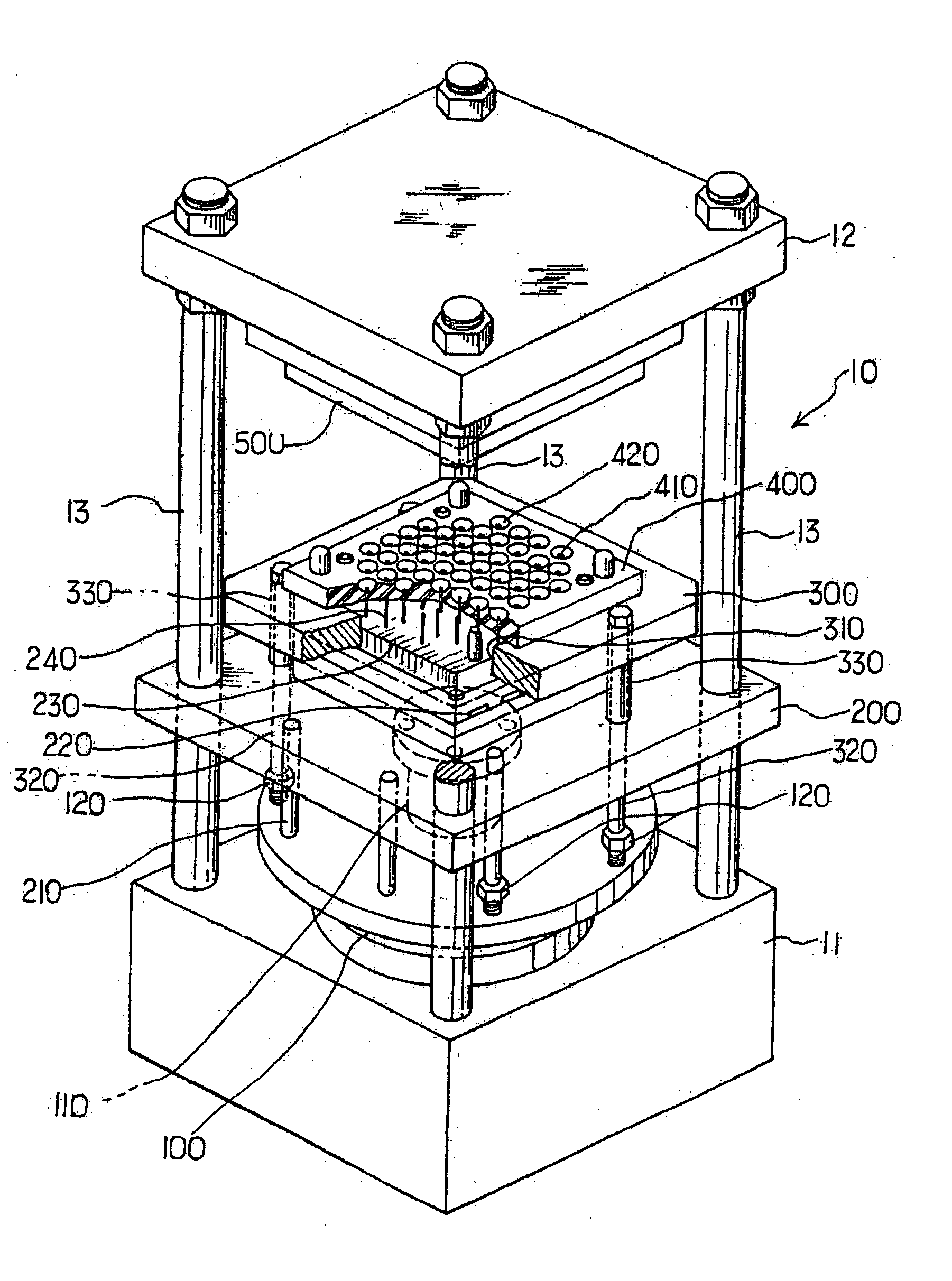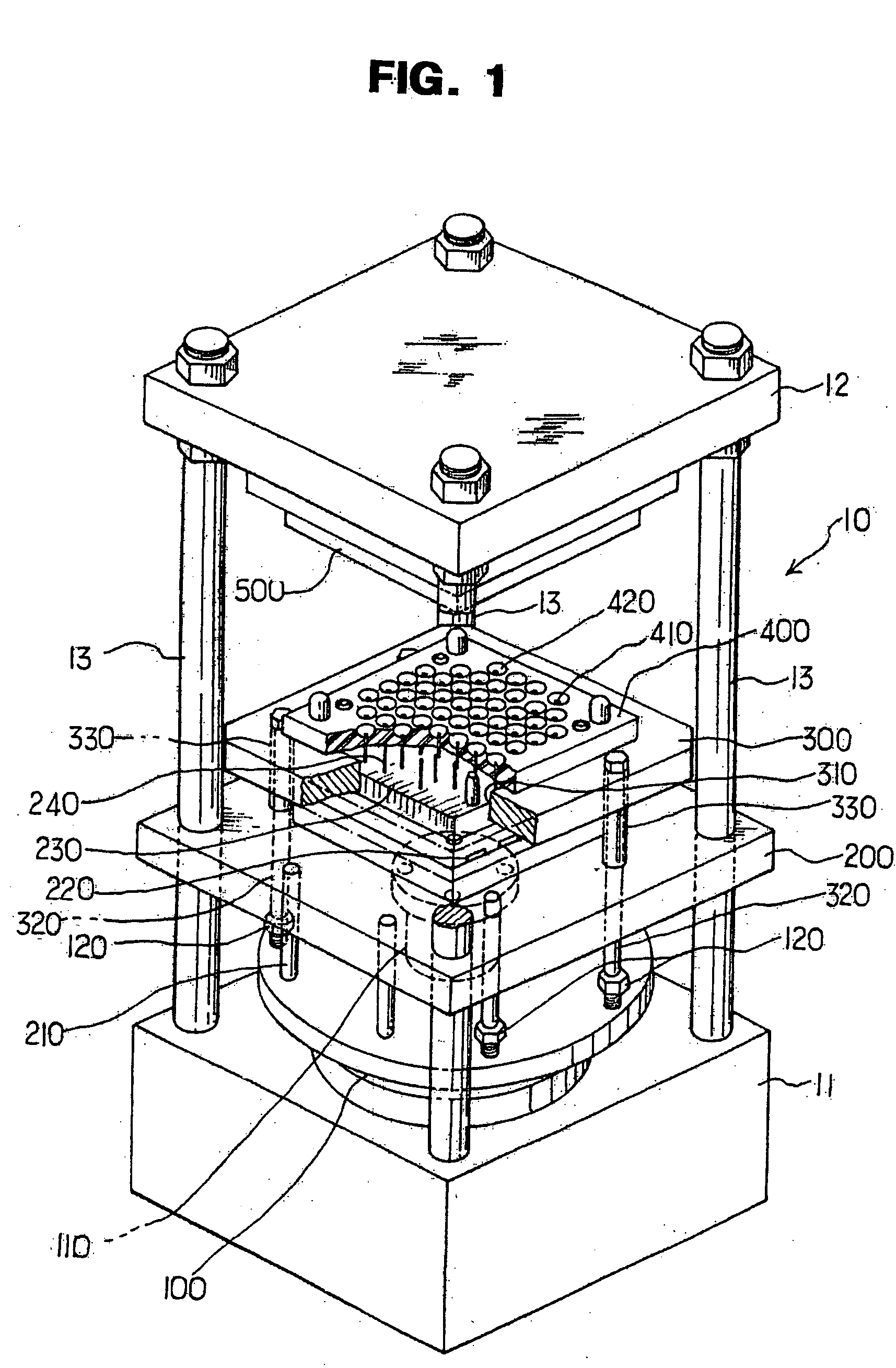Method and apparatus for manufacturing of beads for artificial pearls
- Summary
- Abstract
- Description
- Claims
- Application Information
AI Technical Summary
Benefits of technology
Problems solved by technology
Method used
Image
Examples
Embodiment Construction
[0031] Hereinafter, a detailed description will be made about a configuration of an apparatus for manufacturing artificial pearl beads according to an exemplary embodiment of the invention with reference to the accompanying drawings.
[0032] A base body 10 is provided with guide posts 13 fixedly connecting corners of a lower base 11 and an upper base 12. A cylinder 100 has a piston shaft 110 installed in a middle of the lower base 11 and exposed outside, and is provided with height adjusting bolts 120. A lifting guide plate 200 is fixed to the piston shaft 110 of the cylinder 100 and moves up and down with the guide posts 13 inserted therein. A plurality of lifting guide plate supporting rods 210 are fixedly installed at several places under the lifting guide plate 200. At least one lower mould heating panel 220 is fixed to the lifting guide plate 220. A pin plate 230 is fixedly positioned on the lower mould heating panel 220 and is provided with a plurality of bead drilling pins 240...
PUM
| Property | Measurement | Unit |
|---|---|---|
| Length | aaaaa | aaaaa |
| Length | aaaaa | aaaaa |
| Speed | aaaaa | aaaaa |
Abstract
Description
Claims
Application Information
 Login to View More
Login to View More - R&D
- Intellectual Property
- Life Sciences
- Materials
- Tech Scout
- Unparalleled Data Quality
- Higher Quality Content
- 60% Fewer Hallucinations
Browse by: Latest US Patents, China's latest patents, Technical Efficacy Thesaurus, Application Domain, Technology Topic, Popular Technical Reports.
© 2025 PatSnap. All rights reserved.Legal|Privacy policy|Modern Slavery Act Transparency Statement|Sitemap|About US| Contact US: help@patsnap.com



